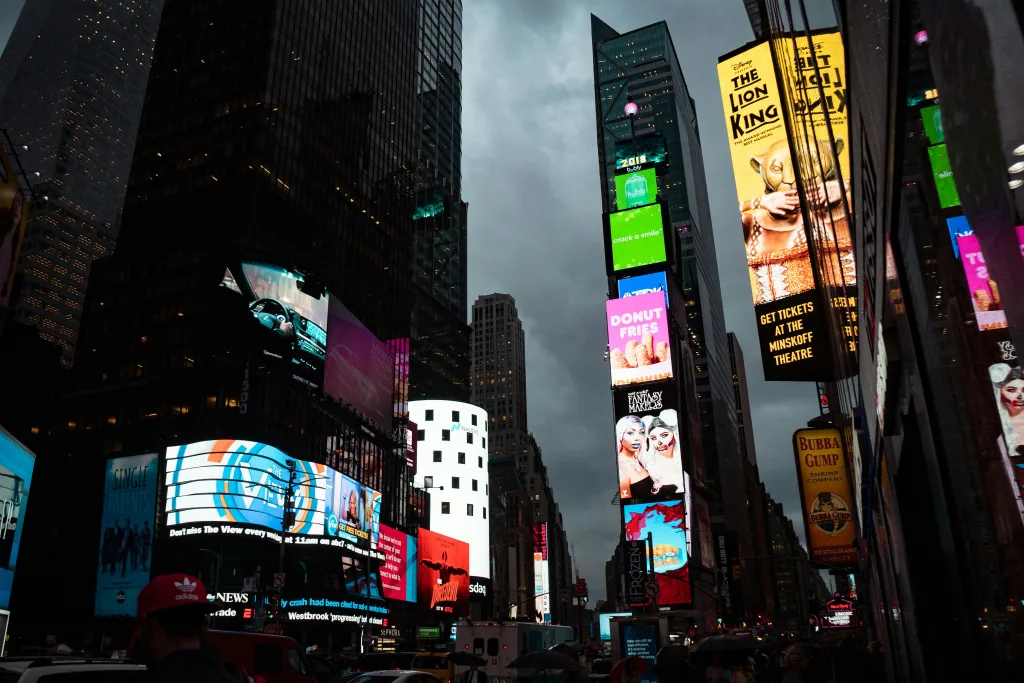
Digital Signage vs. Traditional Signage: Which One Delivers Better Results?
In today’s fast-paced environment, attracting attention and encouraging involvement depends heavily on effective communication. Signage has always been a crucial tool for public spaces, businesses and organizations to advertise services, disseminate critical messages, and enhance user experience. The age-old argument between digital signage and traditional signage has attained traction as a result of technological developments. To find out which one performs better, let’s examine the main differences, advantages, and use cases.
Traditional Signage: A Tried-and-True Approach

Banners, billboards, posters and static displays are examples of printed materials that are used in traditional signage. These are often used as in store signage, menu boards for restaurants and ad signage in public areas for the reason that they are simple to examine and operate.
Benefits of Traditional Signage:
- Cost-Effective for Short-Term Use: Perfect for short-term events or marketing.
- Familiarity: In hospitals, shops and gyms, audiences are familiar to static visuals.
- No Power Dependency: It is suitable for outdoor or isolated areas because it does not require electricity.
However, traditional signage is not as flexible or dynamic as its digital version. It cannot be modified without incurring additional costs after creation, making it less flexible for changing campaigns or messages.
Digital Signage: The Modern Communication Solution

The best digital display software and digital signage cloud software enable digital signage, which changes how organizations and companies relate with their target customers. There are countless applications for this technology, ranging from digital advertising displays in malls to TV digital signage in the hospitality industry.
Advantages of Digital Signage:
- Dynamic Content Updates: Content can be easily changed in real time via digital signage cloud software.
- High Engagement: Dynamic images capture attention more successfully than static displays.
- Versatility: Used for a variety of purposes, including education digital signage, healthcare signage, and conference signage.
- Cost-Efficient Over Time: While the early investment may be higher, the capability to update content without reprinting saves money in the long run.
- Analytics and Insights: Data on audience participation is provided by advance systems, allowing for optimized content distribution.
The versatility of digital signage makes it a popular option for companies looking to stay ahead of the curve, whether they are using it for shopping mall signage, electronic signage, signage for buildings or menu boards for restaurants.
Use Cases: Traditional vs. Digital Signage
Restaurants:
- Traditional Signage: Static menus and promotional posters are still useful for small eateries with constrained budgets.
- Digital Signage: Dynamic menu boards for restaurants can display promotions, showcase specials and even connect with ordering systems.
Retail Stores:
- Traditional Signage: Temporary sales and promotions are a good fit for inexpensive in store signage.
- Digital Signage: With tailored deals and product suggestions, interactive digital advertising displays improve the shopping experience.
Gyms and Fitness Centres:
- Traditional Signage: Posters and banners are generally used to show schedules or promote new lessons.
- Digital Signage: Signage in gyms can offer real-time updates showcasing class schedules and motivational content to keep members engaged.
Healthcare Facilities:
- Traditional Signage: Wayfinding signage and health initiative posters are still extremely common.
- Digital Signage: Healthcare signage can effectively direct guests, distribute health advice and streamline patient check-ins.
Hospitality and Events:
- Traditional Signage: Static signs for event schedules and directions can be useful but are very limited in scope.
- Digital Signage: Event updates, personalized greetings and interactive maps are a few ways that Hospitality digital signage and conference signage improves guest experiences.
Conclusion: Which One Wins?
Digital signage unquestionably gives better results in terms of flexibility, engagement and cost-effectiveness eventually, even though traditional signage has a place in a few situations. Digital signage is revolutionary because it can easily update material, integrate with other technologies and offer real-time information.
Investing in digital signs services and using digital signage cloud software might create new opportunities for companies trying to improve and expand their communication strategy. Whether it’s signage in a gym, education digital signage, or hospitality digital signage, the digital approach guarantees that your message reaches the right audience at the right time, leaving a permanent impact.
Are you ready to up your signage game? With automateB, the best digital display software, discover the full potential. We offer the latest solutions to satisfy your needs, whether they are for shopping mall signage or TV digital signage. Get in touch with us now to find out more!
